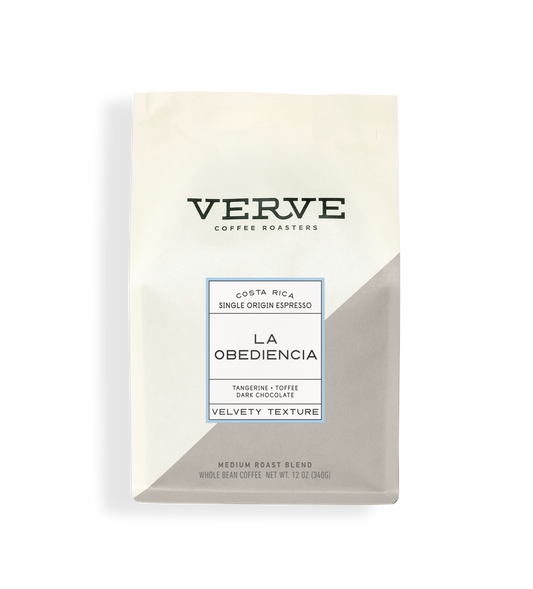Where to Buy Authentic SOE Single Origin Espresso Online
Where to Buy Authentic SOE Single Origin Espresso Online
Blog Article
Recognizing Coffee Beans: the Trip From Coffee to Blended Coffee Beans

The Origins of Coffee: A Global Point Of View
While you may think about coffee as a modern staple, its origins map back centuries, linking with cultures around the world. The tale begins in Ethiopia, where tale says a goat herdsman called Kaldi discovered the energizing impacts of coffee beans after observing his goats romping energetically after consuming them. This sparked interest, resulting in coffee's infect Arab investors that treasured the brewed drink. By the 15th century, it reached Persia, Egypt, and Turkey, where coffeehouses came to be social hubs for conversation and culture.
As trade courses broadened, coffee made its way to Europe in the 17th century, rapidly obtaining popularity. Each society added its distinct spin to coffee preparation, improving its background.
Farming and Harvesting of Coffee Beans
As coffee's trip advanced, the focus changed to the farming and harvesting of specific bean ranges, specifically those used for espresso. You'll locate that coffee beans usually originate from Arabica or Robusta plants, each offering unique flavors. The perfect growing problems consist of high altitudes and rich, well-drained soil, which boost the beans' quality.
Throughout the harvest, choosing methods differ. In some regions, workers hand-pick ripe cherries, ensuring only the very best fruit goes to processing. In other locations, mechanical harvesters are utilized, particularly on bigger ranches. Timing is important; you wish to harvest when the cherries reach peak perfection for maximum flavor.
As soon as collected, the beans are gotten ready for handling, which is vital in identifying their final taste. Understanding the cultivation and harvesting processes gives you understanding right into what goes right into your favorite espresso, enriching your admiration for each mug.
Handling Techniques: From Cherry to Bean
Now that you've found out concerning collecting espresso beans, allow's explore exactly how those cherries change right into the coffee beans you like. You'll see how various harvesting techniques effect flavor, adhered to by the essential actions of fermentation and drying. We'll break down the milling and grading procedure that establishes your coffee's top quality.
Harvesting Strategies Described
When it comes to coffee, comprehending harvesting techniques is essential, since they straight influence the flavor and quality of the beans you enjoy. There are two key methods: careful selecting and strip picking. Discerning picking involves hand-picking just ripe cherries, ensuring you obtain the most effective high quality beans. This approach commonly brings about a richer taste account, though it's more labor-intensive. On the various other hand, strip picking ways harvesting all cherries at as soon as, regardless of ripeness. While it's quicker and more affordable, this can result in a mix of flavors, affecting the final item. Ultimately, the selection of harvesting strategy can considerably affect your coffee experience, so it's worth knowing how those beans made it to your cup.
Fermentation and Drying
After gathering, the following steps in handling coffee beans play a substantial role fit their flavor. You'll discover that fermentation is essential, as it assists damage down the mucilage bordering the beans, improving their preference profile. Depending upon the technique, this procedure can last from a few hours to several days, with varying outcomes based on temperature and moisture.
When fermentation is full, drying complies with, which is just as crucial. You can pick from mechanical or sun-drying drying methods. Sun-drying allows the beans to absorb tastes from the atmosphere, while mechanical drying assurances consistent wetness degrees regardless of weather. Correct drying is necessary to stop mold and maintain the beans' top quality, inevitably affecting your mug of coffee.
Milling and Grading Process
As fermentation and drying out set the stage for flavor growth, the milling and grading process warranties that just the most effective coffee beans make it to your cup. This stage includes eliminating the external layers of the coffee cherry, consisting of the parchment and husk. After milling, the beans are arranged by size and weight, making certain a consistent high quality. You'll locate that grading aids identify problems and categorize beans, which influences flavor and aroma. Top notch beans obtain a higher quality, leading to a richer coffee experience. Once graded, the beans are all set for product packaging and delivery, maintaining their unique qualities. This thorough process is necessary for delivering the phenomenal preference you appreciate in every sip of your favorite brew.
Toasting Strategies: Unlocking Flavor Possible
When you roast coffee beans, the approach you select can substantially impact the taste account. Recognizing the partnership in between time, temperature, and toasting strategies is key to exposing the possibility of your brew. Allow's explore just how these components collaborated to produce the best cup.
Toasting Approaches Described
While you might assume that all coffee roasting techniques produce the exact same outcomes, the reality is that each technique exposes distinct taste possibilities in the beans. Drum roasting utilizes a rotating drum to equally distribute warmth, enhancing caramelization and creating a well balanced taste. Air roasting, on the other hand, distributes warm air around the beans, promoting a lighter roast with pronounced acidity.

Effect On Flavor Account
Different roasting methods not only affect the procedure yet also significantly impact the taste profile of the coffee beans. When you select a light roast, you'll experience bright level of acidity and floral notes, showcasing the bean's origin. In contrast, a tool roast equilibriums acidity with sweetness, frequently disclosing chocolatey undertones. Dark roasts, on the various other hand, highlight bold, great smoky flavors, often masking the bean's distinct features. Each strategy discloses different oils and substances, causing a broad array of flavors. By explore different toasting styles, you can discover which profiles reverberate with your taste. Recognizing these nuances helps you appreciate the creativity behind your mug of coffee, boosting your overall experience with every sip.
Time and Temperature Level Variables
To release the complete flavor capacity of coffee beans, both time and temperature level throughout the toasting procedure play substantial roles. When toasting, you'll locate that higher temperatures can promptly establish tastes, but if you hurry it, you could end up with scorched notes. Conversely, reduced temperatures enable a much more steady taste growth, showcasing the beans' unique characteristics.

Timing is equally as essential; extending the roast too long can result in a loss of acidity and brightness, while as well brief a roast could leave the beans underdeveloped. Locating that pleasant spot calls for practice and testing. By changing these aspects, find out here now you can disclose the rich, complicated tastes hidden within each bean, creating a really remarkable coffee experience.
The Art of Blending: Crafting One-of-a-kind Coffee Accounts

Begin by choosing a base coffee that gives a solid structure. Choose corresponding beans to enhance specific flavor notes. For example, a brilliant Ethiopian bean can bring fruitiness, while an abundant Brazilian coffee adds body. Trial and error is essential-- don't be terrified to change ratios up until you locate your suitable profile.
As you blend, maintain in mind that each combination narrates. You're not simply making coffee; you're producing an experience. Take your time, preference regularly, and delight in the journey of discovering your signature blend - Single Origin Espresso.
Brewing Approaches: Exactly How Prep Work Affects Taste
Mixing coffee opens up a domain of flavor possibilities, but exactly how you brew that mix can significantly influence your last cup. On the various other hand, a pour-over highlights the coffee's clearness and brightness, excellent for showcasing fragile notes.
Espresso, with its high pressure, produces a focused shot that emphasizes sweet taste and crema. If you prefer a lighter mixture, think about a cold mixture technique; it produces a smooth, much less acidic preference.
Eventually, experimentation is essential. Readjusting variables like water temperature, grind size, and make time can change your coffee's account. So, accept the art of developing to discover the tastes concealed in your coffee blends. The right method can boost your experience to brand-new elevations.
The Future of Coffee: Sustainability and Development
As the coffee market evolves, sustainability and development are becoming crucial for resolving find out here now environmental obstacles and meeting consumer demands. You'll notice that more coffee companies are adopting green practices, from sourcing beans morally to carrying out lasting farming methods. These shifts not just aid the earth but additionally enhance the high quality of the coffee you enjoy.
You may see developments like naturally degradable packaging and water-saving brewing approaches that reduce waste. Advanced technology, such as blockchain, is also becoming popular, making sure transparency in the supply chain, which permits you to trace your coffee back to its beginnings.
Additionally, purchasing neighborhood areas and sustaining farmers via reasonable profession initiatives promotes a more lasting coffee community. As you drink your following mug, keep in mind that your options can add to a brighter future for coffee. By choosing lasting brand names, you're not simply enjoying a beverage; you're making a positive influence on the globe.
Often Asked Inquiries
What Is the Distinction Between Arabica and Robusta Beans?
Arabica beans are smoother, sweeter, and have a greater level of acidity, while robusta beans are stronger, a lot more bitter, and contain more caffeine. You'll discover these differences in taste and scent when making your coffee.
How Does Altitude Affect Coffee Bean Taste?
Altitude impacts coffee bean flavor significantly. Greater elevations produce beans with brighter level of acidity and complex tastes, while lower altitudes frequently yield beans that are much heavier and much less nuanced. You'll observe these differences in your cup!
What Are the Health Perks of Alcohol Consumption Coffee?
Consuming coffee can boost your power, boost psychological emphasis, and even boost physical efficiency. It's rich in antioxidants, may lower the risk of certain conditions, and can advertise a healthier metabolic rate when consumed in small amounts.
Can Coffee Beans Be Recycled for Brewing?
Yes, you can recycle coffee beans for developing, however the taste could be weaker. If you take pleasure in experimenting, try reusing them in different methods, like cool brews or adding to healthy smoothies for an additional kick.
Just how Should I Shop Coffee Beans for Quality?
To keep your coffee beans fresh, save them in a closed container in a great, dark area. Stay clear of subjecting them to dampness, light, or warm, as these variables can rapidly weaken their flavor and aroma.
Comprehending Coffee Beans: the Journey From Coffee to Blended Coffee Beans.
Now that you've discovered concerning gathering espresso beans, let's explore just how those cherries change into the coffee beans you love.When you roast coffee beans, the approach you select can drastically impact the flavor profile - Single Origin Espresso.While you could additional hints believe that all coffee roasting approaches yield the very same outcomes, the truth is that each method exposes distinct taste potentials in the beans.Different roasting techniques not just affect the procedure but additionally greatly influence the flavor account of the coffee beans
Report this page